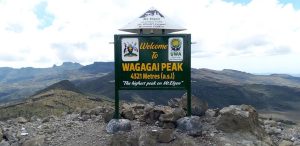
Mount Elgon National park
Mount Elgon National park Uganda Mount Elgon National Park Situated on the Kenyan – Uganda border in Eastern Uganda, Mount
Located in Uganda’s remote north east corner, Kidepo Valley National Park is one of the last great wildernesses of East Africa sitting on a massive 557 square miles of rocky, semi-arid Karamoja province on the north eastern frontier with Kenya and South Sudan in the district of Kabong.
Kidepo Valley National Park consists of mainly rugged savannah, hills and great valleys that are surrounded by the Mroungole Mountains. The park was initially gazetted as a game reserve in 1958 by the colonial government because of the excess poaching and destruction of vegetation by the Ik and Dodoth as they tried to control the number of Tse Tse flies in the area. In 1962 which is the same year Uganda got its independence, the game reserve was upgraded to a national park.
Kidepo Valley National Park has two major valleys, Narus and Kidepo, each of these valley has a river with the same name at their center. These rivers are seasonal and they dry up during the dry season leaving the animals to survive on the remaining water pools. The combination semi-arid conditions in Kidepo, the mountains, savannah grasslands, plains and wild, make Kidepo the park with the best landscape in Uganda. CNN Travel has listed Kidepo among the 3 most attractive national parks in the world and it is the only park in Uganda with conditions that can rival Masai Mara in Kenya and Serengeti in Tanzania.
Wildlife in Kidepo Valley National Park
Kidepo Valley National Park hosts several wildlife species that are not found in any other national park in Uganda like Maneless Zebras, the ostrich, the oryx, cheetat and wild dogs. Other wildlife species found in Kidepo Valley National Park include aardwolf, buffalo, caracal, jackal, Klipspringer, elephants, giraffe, hyena, bat-eared fox, leopards and lions. The antelope species include bohor reed buck, bush buck, bush duskier, defassa water buck, eland, Jackson’s hartebeest, kudu, reedbuck, Uganda kob and oribi among others.
Birdlife in Kidepo Valley National Park
Kidepo boasts over 475 bird species, which is a high concentration coming second only to Queen Elizabeth National Park’s 604 species. Kidepo’s bird list include 100 dry country resident of northern Uganda and Kenya including a number that are endemic to the Kidepo region for example rose ringed parakeets, Clapperton’s francolin and Karamoja apalis. Other highlights include the ostrich, secretary bird, kori bustard, red-throated bee-eaters, the Abyssinian roller and the Abyssinian ground hornbill among others.
Kidepo Valley National Park is also notable for 56 raptor species including the rare lappetfaced vulture, lesser kestrel and Denham’s bustard.
Kidepo Valley National Park climate
The park has semi-arid climate with just one light rainy season per year (April – September). The valley of the Narus River in the south of the park receives some 890 mm of rain per year while only 635mm falls in the Kidepo Valley in the North.
Game Drives
Game drives are the best way to explore Kidepo Valley National Park, mainly done in Narus Valley south of Apoka. The valley is a prime game viewing area in Kidepo as wildlife congregates ere for much of the year. From the comfort of your vehicle, lookout for buffaloes in the swamp along the valley floor, giraffe on the drier slopes above and scan the rock outcrops for lions.
In addition to the main game circuits at Kakine, Katurum and Nagusokopire, newly created loops to the north west of Apoka and to the south of the seasonal crocodile poolhave opened up new parts of the valley to exploration
Guided Nature Walks around Apoka Rest Camp provide the chance to view species such as zebras, hartebeests and reedbucks. This nature-filled excursion is offered is short guided nature walks and long guided nature walks, the short walks are done around Apoka Rest Camp and longer walks take you through the open grasslands of East Kakine providing sightings of giraffe, buffalo, elephant and perhaps distant lions.
Visitors can also explore part or all of the 15km Rionomoe Trail on the southern side of the Narus Valley. All guided nature walks in Kidepo Valley National Park require a ranger guide.
Kidepo Valley National Park is one of the best birding spots in Uganda, best known for its resident birds of prey such as the Egyptian Vulture, Pygmy Falcon and Verreaux’s Eagle. These birds are only found in Kidepo and the region of Karamoja, the ostrich is the most prominent and largest bird found in Kidepo.
Other birds to lookout for in Kidepo Valley National Park include Clapperton’s francolin and Karamoja apalis. Other highlights include the ostrich, secretary bird, kori bustard, red-throated bee-eaters, the Abyssinian roller and the Abyssinian ground hornbill among others.
This excursion takes you on an adventure to the Morungule range, which rises from the plains to the north east of Apoka. This ranger can be explore on foot with a ranger guide escort. Morungole Mountains rise up to 2,750 meters tall and acts as one of the boundaries of Kidepo Valley National Park, the Ik people live on top of these mountains which you will visit during the hiking.
Cultural encounters takes visitors on a visit to the Karamojong, a nomadic pastoralists who live in North Eastern Uganda including some areas around Kidepo Valley National Park. The Karamojong are related to the Maasai of Kenya and their lives are centred on their animals, they are believed that all cattle on earth belong to them. Any cattle that are not kept by them are believed to have been stolen from them at some point in the past.
A cultural visit to the Karamojong is a very interesting experience because they are among the few tribes in Uganda that still live as they used to thousands year ago, the visit is a great opportunity to experience their live, a kind of life most African tribes lived about a century ago.
Getting to Kidepo Valley National Park
By Road – From Kampala, it is 571 km to Kidepo, it is a 10-hour drive via Gulu and Kitgum. This journey is demanding. Most visitors drive from Murchison Falls which takes 7 hours or less on the sealed road, also some visitors choose to break up the journey spending a night near Sipi Falls.
By Air – There domestic and charter flights from Entebbe International Airport or Kajjansi Airstrip to airstrip close to Apoka. These flights only operate on certain days and require a guaranteed number of passengers to fly, making the flight expensive for couples or small groups travelling on their own, but it is no so bad for families or large groups.
Best Time to Visit
Kidepo Valley National Park is accessible all year round. However, its general climate does differ from the rest of Uganda. While June used to be a dry month, it is now accepted that a long rainy season will run from April to the end of November.
The dry season runs from December to March. The temperatures soar during this time, often reaching 40 degrees Celsius. The middle and end of the dry season (November to February) offers higher chances of wildlife sightings since the park’s sandy soils cannot hold water, and it becomes arid. During these dry months, the scarcity of water sources causes animals to congregate around reliable water holes, increasing the chances of sightings. This is also the best time to see cheetah hunting on the short grass plains.
Accommodation in Kidepo Valley National Park
There are limited accommodation option in Kidepo Valley National Park, the available options include

Mount Elgon National park Uganda Mount Elgon National Park Situated on the Kenyan – Uganda border in Eastern Uganda, Mount

Rwenzori Mountains National Park Uganda Rwenzori Mountains National Park The Rwenzori Mountains are one of the most exciting and challenging
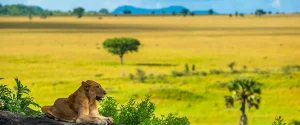
Kidepo Valley National park Uganda Kidepo Valley National Park Located in Uganda’s remote north east corner, Kidepo Valley National Park
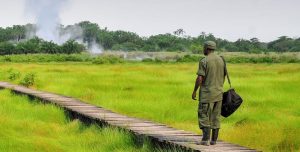
Semuliki Nationl park Uganda Semuliki National Park Semuliki Valley National Park is the first protected Area in Uganda and one
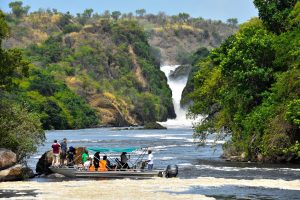
murchison falls national park Uganda Murchison Falls National Park Murchison Falls National Park is one of the most stunning and
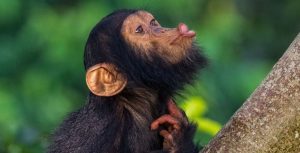
Kibale forest national park Uganda Kibale forest national park Dubbed the Primate Capital of the world, Kibale Forest National Park

Queen Elizabeth National Park UGANDA Queen Elizabeth National Park Queen Elizabeth National Park is the most popular safari destination in
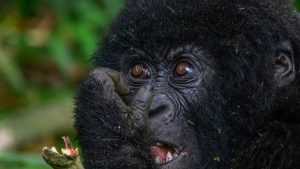
Mgahinga Gorilla National Park Uganda Mgahinga Gorilla National Park Tucked away in the southwestern corner of Uganda, Mgahinga Gorilla National
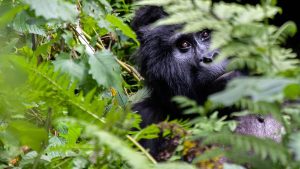
Bwindi Impenetrable National Park Uganda Bwindi Impenetrable National Park Bwindi Impenetrable National Park is a prime gorilla destination in Africa